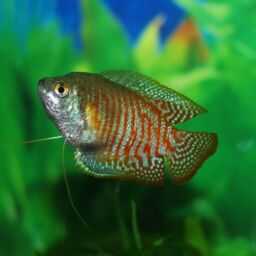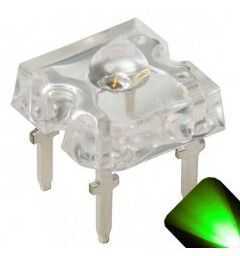One of the most common questions regarding aquariums, either with just fish or with fish and plant life, is when to replace the light bulbs. Although fluorescent tubes may last several years before burning out, experts and manufacturers recommend replacing lamps up to twice a year! Is this the right way to go, or are the light bulb manufacturers just in it for the money?
Although you and I may not be able to tell the difference in light quality, the amount of light given off from an aquarium bulb will diminish over time. With both saltwater tanks and freshwater tanks with plants, many experts recommend replacing the bulbs at least every year.
Of course, the true answer is never as easy as that. If your tank holds just fish, you may be able to use a bulb until it burns out or if algae begins to build up. With no plants in the aquarium, nothing depends on the light for the photosynthesis process. Keep the bulb as long as you please, or replace it when you want more light or higher quality. If you can not see your fish anymore, it may be a perfect time to replace the light.
With a plant or reef aquarium, the situation becomes more complex. You will want to replace the bulbs every six to twelve months for standard fluorescent lights, and ever year to 18 months for Very High Output aquarium bulbs. Even with VHO bulbs, you may want to replace them sooner rather than later, in order to maintain light quality needed for the plants to thrive.
The main reason to replace the bulbs is to maintain the proper amount of light necessary for the plants to grow and to keep algae from building up. Some aquarium lighting experts even recommend changing the bulbs every six months, as the fluorescent light bulbs that are used will diminish over time.
Thankfully, the health of your fish will not be affected if you wait too long to change the bulbs. The main problem with older aquarium bulbs is that not enough light is given off to keep the plants growing and alive. This is noticeable through a phenomenon called “browning out,” where the neon colors of corals or clams will fade to a brownish shade over time as the quality of light they get degrades.
Very High Output bulbs will last longer, but are more expensive than standard fluorescent lamps. VHOs also use more energy and produce more heat than standard bulbs. Some Very High Output bulbs also have special end caps and require a different ballast than the standard variety.
Changing light bulbs in an aquarium is not as simple a matter as waiting for them to burn out, then replacing them. You need to be far more diligent about the light quality your fish and plants are getting, and plan to replace the bulbs based on that. Most aquarium bulb manufacturers specify the rated life of their bulbs, as well as how often they should be changed to maintain light ouput.
AUTOPOST by BEDEWY VISIT GAHZLY






